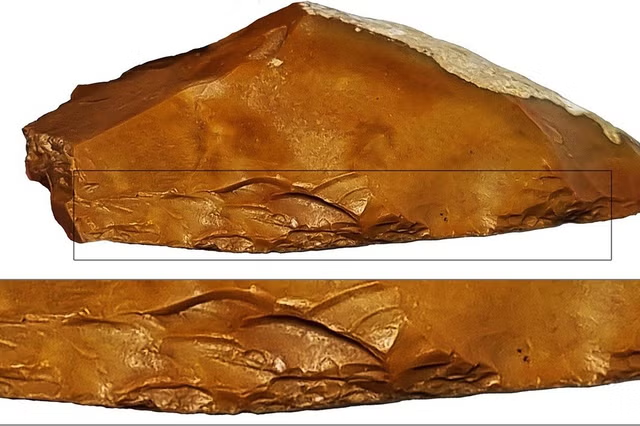Paleontologists have discovered a new species of pterosaur in Australia. The fossilized remains of the flying reptile, which lived among the dinosaurs, were discovered in western Queensland.
Researchers from Curtin University identified the fossilized bones when they were first found, in 2021, by Kevin Petersen, curator at the Kronosaurus Korner museum in Richmond, Australia. The remains have been classified as Haliskia peterseni, a new genus and species of the anhanguerian pterosaur.
Pterosaurs were a group of flying reptiles that lived during the age of dinosaurs, from the Late Triassic to the end of the Cretaceous period. They are known for their diverse sizes and adaptations, ranging from small, birdlike creatures to massive predators with wingspans exceeding 32 feet.
Doctoral student Adele Pentland, who is at Curtin's School of Earth and Planetary Sciences, led the research team. It identified the specimen based on the shape of its skull, arrangement of teeth and shoulder bone structure. Anhanguerians were known to inhabit regions in what is now Brazil, England, Morocco, China, Spain and the United States.
"With a wingspan of approximately [15 feet], Haliskia would have been a fearsome predator around 100 million years ago when much of central western Queensland was underwater," Pentland said in a statement.
The full study is published in the online journal Scientific Reports.
Pterosaurs had hollow bones, elongated fingers to support their wing membranes and varied diets that included fish, small vertebrates and invertebrates. They were the first vertebrates to achieve powered flight and played significant ecological roles in their prehistoric environments.
Petersen's careful preparation revealed the most complete anhanguerian specimen discovered in Australia, with 22 percent of the fossil intact. This includes complete lower jaws, part of the upper jaw, 43 teeth, vertebrae, ribs, wing bones and part of a leg, along with delicate throat bones suggesting a muscular tongue for feeding on fish and cephalopods.
H. peterseni now joins other significant marine fossils on display at Kronosaurus Korner, including the largest marine reptile, Kronosaurus queenslandicus, and other notable plesiosaur and ichthyosaur specimens.
"This discovery is an exciting boost for science, education, and regional tourism," Petersen said in the statement. "I'm thrilled that my discovery is a new species, as my passion lies in helping shape our modern knowledge of prehistoric species."
Do you have a tip on a science story that Newsweek should be covering? Do you have a question about dinosaurs? Let us know via science@newsweek.com.
Disclaimer: The copyright of this article belongs to the original author. Reposting this article is solely for the purpose of information dissemination and does not constitute any investment advice. If there is any infringement, please contact us immediately. We will make corrections or deletions as necessary. Thank you.



